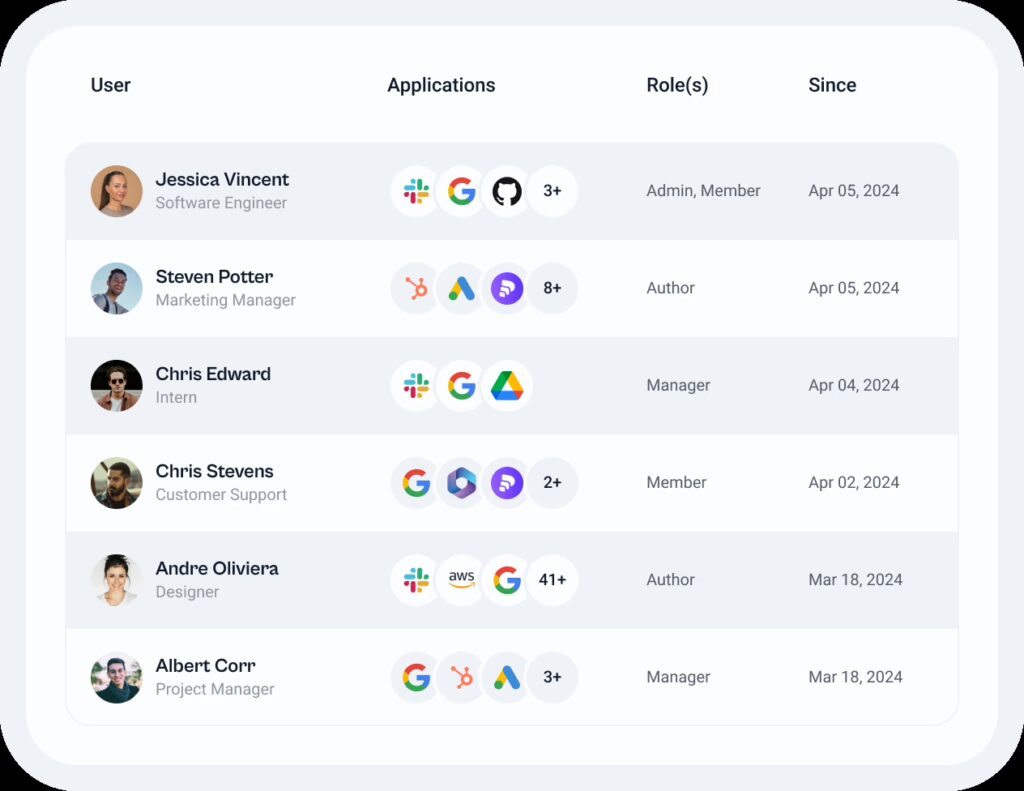Table of Contents
ToggleEffective onboarding has become a cornerstone for ensuring employee satisfaction, retention, and overall organizational success. It’s more than just an introductory process—new hire training is a strategic approach to welcoming, training, and preparing employees for success in their new roles.
In this comprehensive guide, we’ll break down the concept of onboarding for HR management, its importance, benefits, and key steps involved in creating an effective onboarding program. By the end, you’ll have an in-depth understanding of onboarding and the tools you need to implement a seamless process for your team.
What Is Onboarding?
Onboarding is the process of integrating a new employee into an organization. It involves a series of planned steps designed to provide new hires with the necessary knowledge, tools, and support to succeed in their roles.
This process typically includes introductions to company culture, policies, team members, systems, and workflows. Onboarding begins the moment an employee accepts a job offer and continues through their first few months—sometimes even a year—depending on the organization’s approach.
Unlike basic orientation, which often involves administrative tasks like paperwork, orientation program is a more comprehensive process. It aims to make employees feel valued, informed, and confident in their ability to contribute to the organization’s goals.
Key Elements of an Effective Onboarding Process
The Importance of Onboarding
A strong employee integration process is crucial for many reasons. Here’s a deeper look at why it matters:
Improved Employee Retention
Research shows that organizations with effective orientation programs retain employees at significantly higher rates. The first days and weeks at a new job are critical for setting the tone of an employee’s experience. If employees feel unsupported, undervalued, or unclear about their role, they may leave quickly.
Why it matters: High turnover can be costly, both in terms of recruitment expenses and productivity loss. Onboarding helps create a positive first impression, increasing the likelihood of long-term retention.
Enhanced Productivity
Onboarding ensures that employees understand their responsibilities, the tools they need to perform their work, and the processes that help them succeed. A structured onboarding program can help new hires reach full productivity faster.
Why it matters: When employees feel confident and equipped, they’re more likely to perform well. This directly impacts the organization’s efficiency and bottom line.
Strengthening Company Culture
The orientation program is an opportunity to immerse new employees in the company’s values, mission, and culture. It sets the stage for how they will engage with their work and colleagues.
Why it matters: Employees who understand and connect with company culture tend to feel a stronger sense of belonging, leading to higher engagement and morale.
Building Relationships
Through onboarding, employees are introduced to key team members, managers, and colleagues. This helps foster relationships, builds trust, and creates a sense of community.
Why it matters: Strong relationships at work can enhance collaboration, teamwork, and employee satisfaction.
AccessOwl: Streamlining Access Governance & SaaS Management

Automated Onboarding & Offboarding
AccessOwl integrates with 40+ HRIS platforms to automate employee onboarding and offboarding. New hires receive predefined roles instantly, while departing employees have their access revoked, reducing security risks.
Seamless App Provisioning
With automated provisioning for 200+ applications, IT teams can set up auto-provisioning in minutes. Role-based access templates ensure consistent and standardized user permissions.
Centralized Access Tracking
Replacing spreadsheets, AccessOwl provides a single source of truth for tracking applications, user access, and permissions, enhancing security and compliance.
Effortless IT & Security Operations
By automating access management, AccessOwl improves efficiency, minimizes manual work, and mitigates risks associated with unauthorized access.
Frequently Asked Questions (FAQs) About Onboarding
How long should the onboarding process last?
The orientation program process can vary based on the organization and role, but it typically lasts anywhere from 30 days to 12 months. While basic orientation may take only a few days, a full onboarding program should include continuous support, feedback, and development opportunities for at least the first 90 days to ensure proper integration and productivity.
What’s the difference between onboarding and orientation?
- Orientation is usually a short-term event (a day or two) focused on administrative tasks like paperwork, company policies, and basic introductions.
- Onboarding is a long-term, strategic process that includes training, relationship building, goal setting, and ongoing feedback to fully integrate employees into their roles and the company culture.
Who is responsible for onboarding new employees?
Onboarding is a collaborative effort involving multiple roles:
- Human Resources (HR): Manages paperwork, compliance, and company orientation.
- Managers: Oversee role-specific training, set expectations, and provide ongoing support.
- Mentors or Buddies: Help new hires navigate the workplace, answer questions, and provide guidance.
- Team Members: Welcome the new employee and assist with collaboration and integration.
What tools or software can streamline the onboarding process?
Several tools can help automate and enhance onboarding:
- HR Software: Platforms like BambooHR, Workday, or SAP SuccessFactors for paperwork, employee data, and workflows.
- Onboarding Platforms: Tools like Talmundo, Lessonly, or Trainual to deliver training and onboarding tasks.
- Communication Tools: Slack, Microsoft Teams, or Zoom for team introductions and check-ins.
- Learning Management Systems: Platforms like Moodle or TalentLMS for structured training programs.
How can remote employees be effectively onboarded?
For remote onboarding, ensure the process is digital, engaging, and inclusive:
- Schedule video calls for introductions, orientations, and training.
- Provide digital onboarding checklists and access to tools/software before day one.
- Assign a virtual mentor or buddy for ongoing support.
- Organize virtual team-building activities to encourage relationships.
- Use platforms like Zoom, Slack, or Trello to keep communication organized and accessible.
How can you measure the success of an onboarding program?
To assess onboarding effectiveness, track key metrics such as:
- Employee Retention Rates: Compare turnover rates before and after implementing onboarding.
- Time to Productivity: Measure how quickly new hires meet performance goals.
- New Hire Feedback: Use surveys to gather opinions on their onboarding experience.
- Engagement Levels: Monitor participation in onboarding activities and early signs of engagement.
- Performance Reviews: Evaluate progress through 30-, 60-, and 90-day reviews.
What challenges do companies face in onboarding?
Common onboarding challenges include:
- Lack of Structure: Poor planning can lead to confusion and frustration for new hires.
- Overwhelming Information: Bombarding employees with too much information on day one can be counterproductive.
- Limited Follow-Up: Onboarding that stops after the first week doesn’t support long-term success.
- Integration of Remote Teams: Coordinating virtual onboarding can be difficult without proper tools and communication.
Solution: Plan a structured, phased onboarding program that includes continuous support, regular check-ins, and user-friendly tools.
How can onboarding help reduce employee turnover?
Effective onboarding addresses the key reasons employees leave:
- It provides clarity about their roles and responsibilities.
- It helps new hires connect to the company’s mission and team.
- It offers support through training, mentorship, and check-ins.
- It ensures employees feel valued and confident, increasing job satisfaction.
By reducing uncertainty and building relationships early, onboarding creates a strong foundation for retention.
Can onboarding improve company culture? If so, how?
Yes! Onboarding is the first real experience employees have with your company’s culture.
- Introduce the company’s mission, values, and vision clearly.
- Highlight cultural norms and expectations (e.g., communication style, teamwork).
- Encourage team-building and open dialogue to foster collaboration.
- Use onboarding activities like icebreakers, team lunches, or mentorship programs to reinforce a positive and inclusive culture.
What should you do if an employee struggles during onboarding?
If a new hire struggles:
- Schedule a check-in meeting to understand their concerns and challenges.
- Provide additional training or resources to help them gain confidence.
- Assign a mentor or buddy for one-on-one guidance.
- Offer constructive feedback and reassure them that onboarding is a learning process.
- Adjust onboarding tasks to suit their pace without overwhelming them.
Patience, communication, and support are key to helping struggling employees get back on track.
Is onboarding only for new hires?
No. Onboarding can also be valuable for:
- Internal Transfers or Promotions: Employees moving into a new role need role-specific training and expectations.
- Returning Employees: Reintroducing them to processes, policies, or cultural changes that may have occurred during their absence.
- Contract Workers or Freelancers: Ensuring they understand company processes and team dynamics for effective collaboration.
How can you make onboarding more engaging?
To make onboarding interactive and engaging:
- Use gamification (e.g., quizzes or challenges) to make training fun.
- Include team-building activities like games or icebreakers.
- Incorporate multimedia content (videos, webinars) for variety.
- Personalize onboarding experiences based on each new hire’s needs.
- Celebrate small wins, like completing onboarding milestones.
How often should onboarding materials be updated?
Onboarding materials should be reviewed and updated regularly, at least once a year, to ensure they reflect current policies, processes, tools, and company culture. Updates should also occur after significant organizational changes, such as a rebrand, mergers, or the introduction of new technology.
What role does company leadership play in onboarding?
Leadership involvement during onboarding is crucial for setting a positive tone. Executives or senior managers can:
- Send a welcome message or attend a brief introduction session.
- Share insights about the company’s vision and goals.
- Be available for Q&A sessions to demonstrate accessibility.
- Encourage a culture where employees feel valued and supported from the top down.
Conclusion
The orientation program is more than a simple orientation; it’s a comprehensive and strategic process that sets the foundation for employee success, engagement, and retention. By integrating thoughtful pre-boarding, structured role-specific training, social connection activities, and ongoing feedback, organizations can ensure that new hires feel welcomed, prepared, and valued from day one. A well-designed employee integration program not only boosts productivity and employee satisfaction but also strengthens company culture and reduces turnover. Investing in onboarding isn’t just about bringing new employees into the fold; it’s about empowering them to thrive and contribute to long-term organizational success.
